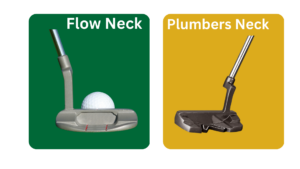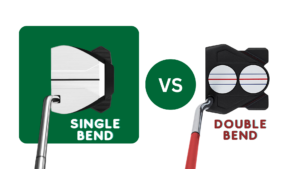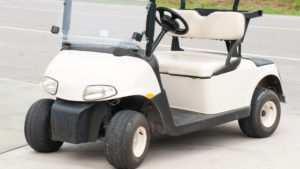Golfers often wonder how long do putters last? The answer depends on the type of putter, materials used in construction, and proper care. Putters may be crafted from a variety of materials, including steel, graphite and polymers. Proper maintenance is essential to ensure that your putter lasts for years to come.
In this blog post, we will explore types of putters, materials used in their construction, factors affecting longevity, and tips for extending the life of your beloved club. So if you’re wondering “how long do putters last” then read on to find out more about what goes into making a quality golfing tool that stands up over time.

Table of Contents:
- Types of Putters
- Blade putters
- Mallet putters
- Materials Used in Putter Construction
- Steel
- Carbon Steel
- Aluminum
- Zinc
- Care and Maintenance of Putters
- Cleaning the clubhead and grip regularly
- Store properly
- Replacing grips
- Factors That Affect How Long a Putter Lasts
- Signs that Indicate a Putter Needs Replacement
- Dents or Cracks
- Bent Shaft
- Loss of Weight
- Worn Out Grips
- Decreased Performance
- Tips for Extending the Life of Your Putter
- FAQs in Relation to How Long Do Putters Last
- Conclusion
Types of Putters
Blade putters

Blade putters are the most common type of putter used by golfers. They have a simple, classic design that has been around for decades.
The blade-style head is generally made from stainless steel or aluminum and features an offset hosel to help keep the clubface square at impact. Blade putters typically provide more feel than other types of putters, making them ideal for those who prefer a softer touch on their putting stroke.
Mallet putters

Mallet putters offer a larger sweet spot and better forgiveness compared to blades due to their larger head size and heavier weight distribution across the face of the clubhead.
Mallets also feature an alignment aid in some form, such as lines or dots on top of the head that make it easier to aim your shot accurately. This makes them popular among beginner golfers who may not yet have developed a great feel with their putting strokes but need help aiming correctly.
A plethora of putters, all with their own distinctive traits, can be found. Comprehending the materials utilized in their manufacture can assist golfers to decide which sort of putter is optimal for them.
Materials Used in Putter Construction

Steel
Steel is the most common material used in putter construction. It’s known for its durability and strength, making it a great choice for golfers who need a club that can stand up to regular use and abuse.
Steel putters are usually heavier than other materials, but they offer more stability on the greens due to their weight. Steel putters tend to be a cost-effective selection for golfers who are looking to save money while still getting a quality club.
Carbon Steel
Carbon steel putters are another popular choice for golfers who prioritize feel and feedback during their stroke. Carbon steel is softer than stainless steel, providing a more tactile response to the golfer during the stroke.
However, carbon steel is also more susceptible to rust and corrosion compared to stainless steel, making it more difficult to maintain over time. Carbon steel putters require more frequent cleaning and maintenance to prevent rust and maintain their performance. However, with proper care, carbon steel putters can last a long time.
Aluminum
Aluminum is another popular material used in putter construction. Aluminum clubs are lightweight yet still durable enough to handle regular play on the course.
The lighter weight makes them easier to maintain swing speed and helps generate faster ball speeds off the face of the clubhead for increased distance control when putting. Aluminum clubs are typically a more economical option compared to steel or graphite, without sacrificing quality and performance.
Zinc
Zinc is a cheap and lightweight material used in many beginner-level putters. However, zinc putters are the least durable of all the materials commonly used in putter construction.
They are prone to wear and breakage with frequent use and may only last a few months to a year before needing to be replaced. While they may be a good option for those who are just starting out and don’t want to invest in an expensive putter, golfers who are serious about their game should avoid zinc putters.
Putters are typically constructed from steel, aluminum or graphite materials and these all have different levels of durability. To ensure your putter’s longevity, it is essential to understand the fundamentals of its upkeep.
Care and Maintenance of Putters
It doesn’t matter if are you using golf drivers, putters, or any other golf clubs. Maintaining the club is key to having a successful round of golf.

Cleaning the clubhead and grip regularly
Cleaning the clubhead and grip regularly will ensure that you get the most out of your putter and it lasts longer. To clean the clubhead, use a soft cloth dampened with warm water and mild soap to gently remove any dirt or debris.
Be sure not to scrub too hard as this can damage the finish on the clubhead. For cleaning the grip, use a soft brush or cloth also dampened with warm water and mild soap; then dry thoroughly with a towel before using again.
Store properly
When not in use, preserving your putter’s condition requires it to be stored properly and separately from other clubs. Putters should be stored in their original headcover if possible, but if not available then store them separately from other clubs so they don’t rub against each other causing scratches or dents in either one’s surface.
If storing outdoors make sure there isn’t direct sunlight hitting them as UV rays can cause fading over time which could affect performance negatively due to glare off of different areas of the clubhead during swings and putting strokes.
Replacing grips
Replacing grips on putters periodically is recommended, even though they may look fine at first glance. Worn-out grips can lead to poor performance by decreasing traction between hands and shafts while swinging or putting, resulting in decreased accuracy and distance control.
It is advised to replace grips every 6 months (or sooner depending on the frequency of play) in order to maintain the highest quality of game without sacrificing performance due to old equipment.
By following the proper care and maintenance guidelines for your putter, you can help ensure that it lasts as long as possible. Exploring ways to maximize the lifespan of your putter necessitates examining various elements that influence its endurance.
Factors That Affect How Long a Putter Lasts

The grade of materials used in the assembly of a putter has an important bearing on its durability. Putters are typically made from steel, aluminum or graphite and the material chosen has an impact on the longevity of the club.
- Steel putters, although usually more resilient than other varieties, can corrode if not properly maintained. Aluminum putters offer increased forgiveness and lighter weight, but they may not last as long as steel models due to wear and tear over time.
- Graphite putters offer even greater forgiveness with less effort needed to hit shots accurately; however, these clubs may require more frequent replacement due to their tendency to crack or break under extreme conditions.
- The frequency of use and abuse of the clubhead and shafts can also affect how long a putter lasts. If you’re an avid golfer who plays multiple rounds per week then your clubs are likely going through more wear-and-tear than someone who only hits balls at driving ranges occasionally. So the same putter can have different lifespans varying from person to person.
- The same goes for those who practice putting on artificial surfaces like indoor mats or carpets which can cause extra damage over time compared to natural grass greens outdoors where there is some cushioning effect from soil underneath them. Additionally, if you’re hitting off hard surfaces such as concrete tee boxes this could also take its toll on your equipment faster than normal too.
Factors such as the quality of components used in crafting a putter, environment and frequency of use can have an impact on its longevity. With this knowledge, it is possible to take steps to extend the life expectancy of your club by following some simple tips for maintenance.
Signs that Indicate a Putter Needs Replacement
A putter is an essential golf club that is used for putting the ball into the hole. Just like any other golf club, putters can wear out and need replacement after an extended period of use. The following are some signs that indicate whether you need new golf clubs or not:

Dents or Cracks
Over time, the head of a putter can become dented or cracked, which can significantly impact its performance. A dent or crack on the head can alter the weight distribution, causing the ball to roll differently than intended. Also, a damaged putter head can affect the sound and feel of the club, which can further impact your confidence in your stroke. If you notice any damage to the head of your putter, it may be time to replace it.
Bent Shaft
The shaft of a putter is a vital component that helps with alignment and accuracy. A bent shaft can significantly impact the accuracy and performance of a putter. If you notice that the shaft is bent or twisted, it is best to replace the putter. Using a putter with a bent shaft can cause the ball to go off-course, resulting in missed putts. To get maximum longevity, use graphite shafts rather than steel shafts.
Loss of Weight
Putters are designed to have a specific weight that provides optimal performance. Over time, the weight of a putter can change due to wear and tear, causing the club to feel different during the stroke. If you notice that your putter has lost weight, it may be time to replace it. A new putter will have the correct weight, ensuring optimal performance and consistency.
Worn Out Grips
The grip on a putter can become worn out over time due to constant use. Worn-out grips can cause the club to slip during the stroke, affecting accuracy and consistency. If you find that your grip is slippery or worn out, it may be time to replace it. A new grip can provide better traction, resulting in better control of the club and better performance on the golf course.
Decreased Performance
If you notice that your putts are not as accurate or consistent as they used to be, it could be due to the age or wear and tear of your putter. As putters age, they can lose their original feel and balance, resulting in a decline in performance. In this case, it may be time to replace it to improve your game.
Tips for Extending the Life of Your Putter

- Cleaning your putter after every round of golf is the best way to ensure it has a long life. Taking a few minutes to wipe down the clubhead and shaft with a damp cloth can help remove dirt, debris, and grime that could corrode or damage the metal over time. You should also use a specialized cleaner designed for golf clubs if you want to really keep your putter looking like new.
- Dropping or throwing your clubs can cause irreparable damage and significantly reduce their lifespan. If you’re frustrated on the golf course, take some deep breaths before lashing out at your golf equipment – no matter how tempting it may be. Instead of dropping them in frustration, gently place them back into their bag when not in use.
- Storing your clubs in an environmentally controlled area is key for keeping them safe from extreme temperatures and humidity levels which can cause rusting or warping over time. Avoid exposing your clubs to direct sunlight, as this could lead to overheating during the off-season. By taking the proper precautions, you can be sure to have your beloved golf clubs for a long time.
FAQs in Relation to How Long Do Putters Last
Do putters ever wear out?
Yes, putters can wear out over time. The materials used to make them will eventually degrade due to exposure to the elements and regular use. To maximize the lifespan of your putter, regular cleaning and proper storage when not in use, as well as correct putting technique, are essential.
Also, be sure that you are using the correct technique when putting – an incorrect stroke could lead to more rapid deterioration of your club head or shaft.
How often should you get a new putter?
A few elements can determine whether it’s necessary to switch out your putter, such as the state of your current one and how often you use it. If your current putter is still performing to an acceptable level, then it may not be necessary to replace it. You can keep yours from starting a few rounds to 10 years!
However, if you find that your putting has been inconsistent or inaccurate lately due to wear and tear on the club head or shaft, then replacing the putter may be beneficial. Additionally, depending on how much golfing experience one has had over time will also affect when one should consider purchasing new putters or new clubs. For example, an experienced golfer who plays frequently may want to invest in a higher-quality model than someone just starting out with their game. It is better to pick up the hybrid clubs, they perform well than irons and wood clubs.
Are 10 year old golf clubs still good?
Yes, 10 year old golf clubs can still be good. Generally speaking, the quality of golf club components has improved over time and older clubs may not have as much technology or materials used in modern ones.
Though their age may be a factor, if looked after and kept in good condition then 10 year old golf clubs can still work as well as newer models. It is important to inspect them for any signs of wear or damage before using them on the course though.
How long should irons last?
The longevity of irons is contingent on several components, such as their quality and how often they are used. Generally speaking, a set of high-quality golf irons should last between five to seven years with regular play.
Irons that are used less frequently may last even longer if properly cared for and stored in a dry environment away from extreme temperatures. Ultimately, it is important to keep an eye on your clubs’ condition so you can replace them when necessary before they become too worn out or damaged to be effective during play.
Conclusion
Knowing how long golf clubs last will help you in different aspects of golfing. Among the other golf clubs, putters are an essential part of any golfer’s bag and can last for many years with proper care. The construction materials and upkeep of a putter will determine its durability, so taking proper care is key to keeping it in optimal condition for an extended period.
Taking steps such as cleaning your club after each use and storing it properly when not in use can help extend its life span significantly. Additionally, understanding the factors that affect a putter’s longevity can also be beneficial to golfers who want their clubs to stay in top condition for longer periods of time.
Discover the best tips and tricks for extending the life of your putter with GolfingEagle.com! Learn how to maintain, store, and use your putter correctly so you can keep it in top condition for years to come.






